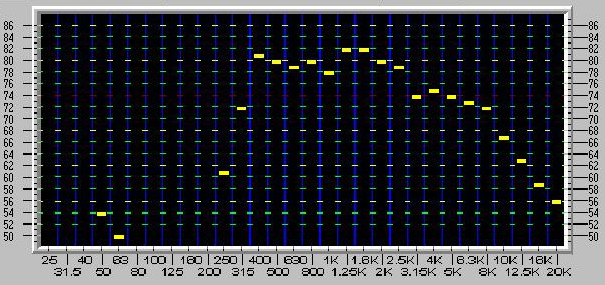Rerurn to Romy the Cat's Site
In the Forum: Horn-Loaded Speakers
In the Thread: Vitavox’s S2 Survival Guide.
Post Subject: Mystery of Vitavox S2 resolved!Posted by Romy the Cat on: 4/11/2005
sertraline alcohol craving
sertraline
and alcohol
Ah, such a beautiful beautiful beautiful beautiful discovery!
After all, after the years of dealing and fighting with it I come up with the observation that the Vitavox S2 driver could and actually should be used “as is”. The harshness that I was reported over the years, and that many people have concurred, is not the problem of the driver but a problem of “not clean” signal path (In my case it was a miserable courtesy to the Lamm preamp)
With the original “metal surround” Vitavox diaphragms and a “clean” signal path (for now Bidat directly to Melquiades) the upper range of the Vitavox S2 driver turned out to be crystal clean with no signs of any harshness! Bingo!!!
It always mystified me how come the S2 driver had this harshness. The Vitavox should not be problematic. Contrary to all other compression drivers out there the Vitavox S2 never was designed to be use as PA driver and never meant to pump an acoustic pressure into the stadiums. The S2 was originally designed to be use excessively for sound reinforcement installations when the acoustic system operates along with a symphonic orchestra. The initial low power handling S2 design meant to be used as sound reinforcement in Royal Albert Hall and Queen Elizabeth Hall where conductors and musicians should not be able to acknowledge that thier orchestra were sonically reinforced. The S2 must not had any harshness!!!! It always asked myself how the hell they were able to use it if the S2 in my hand always had that “sound a cello with cracked deck” and that “HF of a oxidized tenor”?
After all, after the years of playing with S2, massaging it performance, learning its behavior end providing for it what needed… it turned out that I was using electronics that was not able to handle the transient and speed of this driver! As the result I was curing and headlining the problem that in fact did not exist!
Well, I was wrong, no mater who and how “helped” me to be wrong. I know that there are some people of there who listened me and bought the contemporary plastic suspension diaphragms. So, I did, as they are "softer" at HF. You could look at the graph above and made up your own judgment. Yes, with the contemporary plastic suspension diaphragms you still have Vitavox S2 driver and it still sound very fine. A distinction between the Vitavox “old” and new “diaphragms” is not as dramatic as the distraction between the Altec aluminum and symbiotic diaphragms for 808 and 802. In fact the Vitavox cones sound very much alike but they should be used differently.
The plastic suspension diaphragm has the secondary resonance bulge that pretty much prevents to use the driver across 1000Hz, also it has ~2dB less output about 3.5Khz.

The original metal suspension diaphragm is dead flat form 500Hz to its top and it has +2db at its upper knee compare to the cone with plastic suspension. I do not know if the plastic suspension diaphragm is more forgiving above 8kh or what whatever other reasons but with SS-like electronics (whatever it means) the plastic suspension diaphragm sound cleaner and much less stressed. However, with the clean and high quality signal I would go for the metal suspension due to linearity of the response, due to ability to use the stunning S2’s lower knee and due to gaining the the 2dB of sensitively.
What I am saying might lead to a conclusion that the vintage metal suspension cone has a higher resolution at HF. I would not say so. The word “resolution” is not really applicable to Vitavox S2 – it really operates above this definition. The S2 has own very idiosyncratic upper range with own helpful resonances injected into sound. I feel that that original metal suspension diaphragm does it bolder and more aggressively then the plastic suspension diaphragm. As the result, the metal suspension diaphragm operates at more dangers “resonances mode” and presumably it imposes an extra strengthen/demands to the cleanness of signal, at least my Lamms were not able to handle it. For people who are not familiar with a properly sounding Vitavox S2 the idea a driver inject some kind of artificial resonances would be ridicules and threaten. Find your ways to hear what S2 does and then made up your mind.
I hope, this thread will be useful for S2 users out there. I have now my S2 running with the original diaphragms in the very same way in which it was made 55 years aback: I have no HF harshness at all. The Probably to finalize everything it would require to bring my Lamm ML2 and L2 back to my system, get the harshness back and to name exactly which component was responsible for the failure. I can tell with 100% confidence that the guilty party in my case was the Lamm L2 preamplifier (or what they call “L2 Reference”).
Well, it was quite interesting and educational journey, learning, investigating and debugging of playback. The good part that everything turned to the direction and has settled down how it should be and the final result got better then the previous one. I made in past some mistaken conclusions about the use of S2, I made them due to my blind trust of due to my Moronity I do not know and do not particularly care. The important part is that I moved forward and this is what an evaluation is all about…
Rgs,
Romy the CatRerurn to Romy the Cat's Site